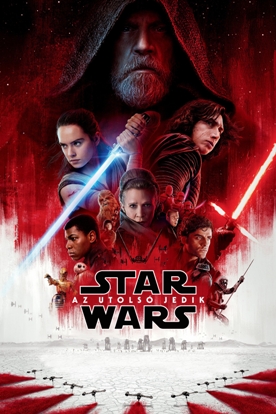
Following the events of Star Wars: The Force Awakens, Rey (Daisy Ridley) has found broken and depressed Jedi Master Luke (Mark Hamill), and wants him to return to civilization to bring hope to the rebellion. Personally, she wants him to train her in the use of the force so that she can find her place—neither of these requests is of much interest to him. Meanwhile, The Resistance, led by Leia (Carrie Fisher), has been caught in the middle of the evacuation of their main base by the forces of The First Order, led by General Hux (Domhnall Gleeson) and Kylo Ren (Adam Driver). When Vice Admiral Holdo’s (Laura Dern) plan strikes hotshot pilot Poe Dameron (Oscar Isaac) as foolish, he, Finn (John Boyega), and Rose (Kelly Marie Tran) come up with their own plan that involves the latter two going off to a not-cloud-city to get help from a mysterious stranger.
As The Force Awakens was a remake of Star Wars (A New Hope), The Last Jedi is a remake of The Empire Strikes Back. Once again it is a bridge film, that has no beginning and no end and is incomplete on its own. Once again we have the rebels evacuating and getting caught. Once again our heroes split up, the young Jedi-to-be going off to a weird outback to work with a grumpy, odd master and that training plan not working out as hoped. Once again the most rebellious of rebels strike out on their own and… OK, I’d get deep into spoiler territory if I spelled it all out so I’ll say there are similar captures, similar escapes, similar threats, similar realizations, similar confrontations, similarly laid out battles and so on. Nearly beat for beat this is The Empire Strikes Back. It reached a point that I found it ridiculous that they’d given this film a new name. It’s a remake.
But, it is a cleverly made, artistically constructed, updated and upgraded remake. The Force Awakens seemed to me to be less of a movie and more an amalgamation of parts from the previous Star Wars episodes. The Last Jedi is a remake done right. Yes, we get all the old notes, but some are sung differently and we get a few melodies we didn’t before. The old themes are on display, be we get some new ones too. It is shocking how the same this movie is while managing to feel really different. Better still, it knows its place. It understand that it is a remake and plays with that fact, twisting here and there, playing a game of oneupmanship with Star Wars V. The meta-message is clear: This is the new version of the old, made by new filmmakers who must deal with what the old ones did, about new characters who dwell excessively on the old characters and events of the old films. It plays with nostalgia, but it also is yelling, “Get over yourself.”
Which means this film is surprisingly good. The acting is solid (always a sore point with the original trilogy), with all of the young kids shining and Mark Hamill proving that all he needed was a little experience and a good director. Carry Fisher is fine and it is a nice sendoff for her, but she isn’t the standout that Hamill is. Better are the characters. Everyone introduced in The Force Awakens is improved upon. Rey, Poe, and Finn have previously hidden depth. And Kylo Ren is significantly less annoying, no longer appearing to be whining Anaken 2.0. Rose is a nice addition who lets us look at who the true enemies of freedom are in the Star Wars universe, and in our own, and aids is stepping us away from the elite nobles and special chosen ones that have infested the franchise for too long. And Luke is treated best of all. In The Force Awakens, Han seemed a bit silly, acting just as he had nearly forty years ago. It was unnatural and off-putting. Luke isn’t the twenty-year-old kid with a hooked-on gray beard. He’s aged. He’s a man twisted by the tragedies of life and by self-doubt. And it makes sense that he went off to play hermit (I always had some doubts on if our previous two Jedi hermits really would have done that). If you were going to bring back a classic character, this was the way to do it.
You already know the action is good. It is a Star Wars film—the action is going to be good. And the special effects are amazing. I watched Justice League a week ago, but these two films look like they were made decades apart. Technology is on the side of Lucusfilm. I cannot help but imagine the team at ILM going to an afternoon screening of JL just to laugh.
The Last Jedi also has humor without ever getting campy or inappropriate. It has plenty of cute critters without getting on my nerves (like Ewoks…). And damn is it pretty. There are some sets (the throne room) and some shots (overhead of the speeders on the salt planet) that are magnificent.
No, it isn’t all brilliant. It is a bridge film, so we do not get a full story and nothing is finished. We spend a bit too much time on side projects and at least one new character should have been cut from the script. Plus a few characters make decisions that are hard to fathom and take a bit too long to make obvious ones. We have some good duels, but none to compete with the best of the past—though it does have some fabulous moments. But the flaws don’t stop The Last Jedi from being rip-roaring entertainment. And it is also smart. Star Wars was never the place to go for layers, but The Last Jedi changes that. You want to think about social issues? It’s got you covered. Gender issues? Yup. Fan culture and nostalgia? Plenty there. The meaning of heroism? Sure. Animal rights? Yes. Personal identity and finding your way in life? Yeah.
There’s been grumbling from some fanboys, but ignore that as their upset has nothing to do with the quality of the film. It’s a combination of nostalgia-kids who wanted exactly the same thing with exactly the same characters acting in exactly the same way and are unhappy that some things (mainly Luke) have changed, and Doomsphere residents who are angry that there are as many lead female characters as male ones and both a Black man and an Asian woman have prominent roles. Assuming you aren’t joining a men’s rights group, ethno-nationalists, or the Sad Puppies, you can ignore the frothing negative comments on Reddit.
The Last Jedi is a solid action film and one of the better entries in the franchise. See it.

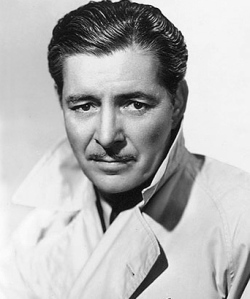 The best film stars are defined by their voices and none had a finer voice than Ronald Colman; I would bet it has been imitated more often than any other. His good looks got him parts in silent cinema, but when the talkies came along, he really bloomed—the man with the mellifluous voice. But even with that liquid gold voice, great parts were few and far between, and even this list of his best films gets a bit weak toward the end.
The best film stars are defined by their voices and none had a finer voice than Ronald Colman; I would bet it has been imitated more often than any other. His good looks got him parts in silent cinema, but when the talkies came along, he really bloomed—the man with the mellifluous voice. But even with that liquid gold voice, great parts were few and far between, and even this list of his best films gets a bit weak toward the end.

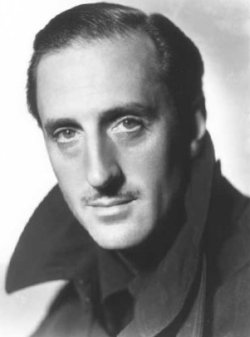 An actor with both one of the most distinctive profiles and most distinctive voices in Hollywood, Basil Rathbone became identified with Sherlock Holmes to his dismay. He should have taken more joy in the connection as few of his other lead roles have been remembered. He was in a large number of classic films, but, except for
An actor with both one of the most distinctive profiles and most distinctive voices in Hollywood, Basil Rathbone became identified with Sherlock Holmes to his dismay. He should have taken more joy in the connection as few of his other lead roles have been remembered. He was in a large number of classic films, but, except for 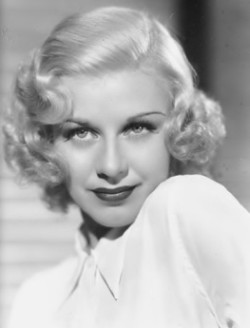 Ginger Rogers will forever be known as the dancing partner of Fred Astaire; they fit together. Together they made some of the greatest film musicals of all time. She could manage the steps, as well as both the sophisticated and common attitudes needed for the comedy and romance. Astaire danced with others who were technically better, but no one who was such a perfect partner. Apart from Astaire she strove to have a “serious” career (after a group of “let’s put on a Broadway show” films) that led to a string of turgid melodramas that she could never pull off—not that anyone could have made Kitty Foyle watchable. Her best “solo” works were comedies.
Ginger Rogers will forever be known as the dancing partner of Fred Astaire; they fit together. Together they made some of the greatest film musicals of all time. She could manage the steps, as well as both the sophisticated and common attitudes needed for the comedy and romance. Astaire danced with others who were technically better, but no one who was such a perfect partner. Apart from Astaire she strove to have a “serious” career (after a group of “let’s put on a Broadway show” films) that led to a string of turgid melodramas that she could never pull off—not that anyone could have made Kitty Foyle watchable. Her best “solo” works were comedies.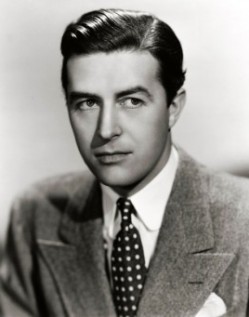 Handsome and debonair, Milland’s early career was mainly in romantic comedies and light action films. His big break came with The Jungle Princess (1936), which made Dorothy Lamour a star as The Sarong Girl. His reputation changed with The Lost Weekend (1945) which won multiple Oscars, but is hard to view as anything other than suffering-porn now—it lacks a plot and an ending. It was no doubt important for people who never realized that alcoholism was bad. But this did alert Hollywood to his skill as a serious actor.
Handsome and debonair, Milland’s early career was mainly in romantic comedies and light action films. His big break came with The Jungle Princess (1936), which made Dorothy Lamour a star as The Sarong Girl. His reputation changed with The Lost Weekend (1945) which won multiple Oscars, but is hard to view as anything other than suffering-porn now—it lacks a plot and an ending. It was no doubt important for people who never realized that alcoholism was bad. But this did alert Hollywood to his skill as a serious actor.
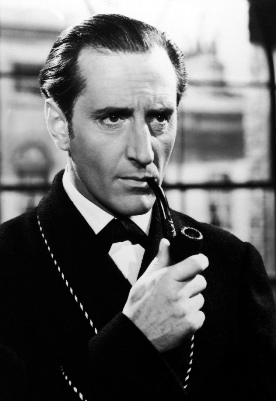 Basil Rathbone starred as Sherlock Holmes in 14 films, with Nigel Bruce as a blustering, foolish Doctor Watson. When I watched these as a child—broadcast one each week by a local TV station—I treated them like a TV show, with all of the movies being approximately the same. They aren’t.
Basil Rathbone starred as Sherlock Holmes in 14 films, with Nigel Bruce as a blustering, foolish Doctor Watson. When I watched these as a child—broadcast one each week by a local TV station—I treated them like a TV show, with all of the movies being approximately the same. They aren’t.
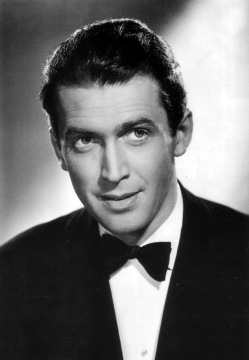 Stewart had a more varied career than most actors and far more than most leading men of the golden age. He not only was in, but was known for, comedies, dramas, melodramas, family films, romances, thrillers, and Westerns. Early in his career, he was in a string of sentimental Frank Capra movies, with It’s A Wonderful Life being the most famous. I’m not a fan of these as they tend to go over the top with shmaltz, letting both real human interaction and humor die for the sake of sentimentality. The worst offender is You Can’t Take It with You, a wonderful play that is gutted by Capra. Luckily, Stewart had other moments, with strong turns in comedies before becoming one of Hitchcock’s two favorites (
Stewart had a more varied career than most actors and far more than most leading men of the golden age. He not only was in, but was known for, comedies, dramas, melodramas, family films, romances, thrillers, and Westerns. Early in his career, he was in a string of sentimental Frank Capra movies, with It’s A Wonderful Life being the most famous. I’m not a fan of these as they tend to go over the top with shmaltz, letting both real human interaction and humor die for the sake of sentimentality. The worst offender is You Can’t Take It with You, a wonderful play that is gutted by Capra. Luckily, Stewart had other moments, with strong turns in comedies before becoming one of Hitchcock’s two favorites (